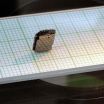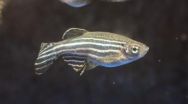(Press-News.org) (PHILADELPHIA) -- Most cancer vaccines have not lived up to their promise in clinical trials. The reason, many researchers suspect, is that the immune cells that would help the body destroy the tumor – even those reactions boosted by cancer vaccines – are actively suppressed. Now, researchers at Thomas Jefferson University have found that a single cell type is actively suppressed in several experimental cancer vaccines, paving the way toward methods to break suppression and improve the effectiveness of cancer vaccines. The work was published this week online in the European Journal of Immunology.
"The conventional wisdom is that the body knocks out all of the cells that can mount an immune response to the cancer," says first author Adam Snook, PhD, a Research Instructor at Thomas Jefferson University. "In fact, our work shows that it's only one cell type that is affected. But that cell, the T-helper cell, acts as the lynchpin."
Cancer vaccines are designed to boost the body's natural defenses against cancer. They work by training the immune system to recognize and attack specific tumor peptides, which are a kind of identification tag for tumors. These peptide "tags" help the immune system find and attack cancer cells. There are three types of cells that can "see" and react to these tags: T-helper cells, cytotoxic T cells, and B cells, and researchers thought that all three were trained, or tolerized, to ignore the tags on cancer cells.
Dr. Snook and colleagues tested which cell was involved by inoculating mice with a cancer vaccine they developed for colorectal cancer using a tumor peptide called guanylyl cyclase C (GUCY2C). Normally, GUCY2C-vaccinated mice would not produce much of an immune response, from either T cell type or B cells. However, when the researchers boosted the GUCY2C vaccine by linking it to another peptide called S1 that efficiently activates T-helper cells, they were able to see a vigorous activation of cytotoxic T cells and B cells directed at GUCY2C.
In fact, the GUCY2C vaccine-S1 combo improved the survival time of mice with cancer by months compared to only days with GUCY2C vaccine alone. In fact, many mice were cured of their disease.
When Dr. Snook tested two other cancer peptides, one for breast cancer (Her2) and one for melanoma (Trp2), he saw similar results, suggesting that selective inactivation of T helper cells occurs for peptides found in many cancer types. "The results make a lot of sense," says Dr. Snook. "T-helper cells, as their name suggests, provide help to both cytotoxic T cells and to B cells. The entire peptide-specific immune response can be taken out by tolerizing this one cell type."
In addition, T-helper cells are also essential for creating immunological memory. Boosting T-helper cell activation also protected mice from challenge with cancer months after the initial vaccination, increasing their survival and decreasing tumor number.
The next step is to test whether a T helper peptide-linked GUCY2C vaccine could help fight colorectal cancer in humans. Dr. Snook and colleagues are currently enrolling patients in a clinical trial aimed at reducing the rate of cancer recurrence in patients who had their primary tumors removed.
INFORMATION:
The work was funded by NIH (R01 CA75123, R01 CA95026, RC1 CA146033, P30 CA56036, R01 CA170533; F31 CA171672); Targeted Diagnostic and Therapeutics Inc.; and a Measey Foundation Fellowship. Scott Waldman is the Samuel M.V. Hamilton Professor of Thomas Jefferson University. This project was funded, in part, by grants from the Pennsylvania Department of Health (SAP #4100059197, SAP #4100051723). The Department specifically disclaims responsibility for any analyses, interpretations or conclusions. The funders had no role in study design, data collection and analysis, decision to publish, or preparation of the manuscript.
Scott Waldman was the Chair of the Data Safety Monitoring Board for the C-Cure Trial sponsored by Cardio Biosciences, and the Chair (uncompensated) of the Scientific Advisory Board to Targeted Diagnostics and Therapeutics, Inc. which provided research funding that, in part, supported this work and has a license to commercialize inventions related to this work. All other authors declare no financial or commercial conflict of interest.
For more information, contact Edyta Zielinska, 215-955-5291, edyta.zielinska@jefferson.edu.
About Jefferson
Thomas Jefferson University (TJU), the largest freestanding academic medical center in Philadelphia, is nationally renowned for medical and health sciences education and innovative research. Founded in 1824, TJU includes Jefferson Medical College (JMC), one of the largest private medical schools in the country and ranked among the nation's best medical schools by U.S. News & World Report, and the Jefferson Schools of Nursing, Pharmacy, Health Professions, Population Health and the Graduate School of Biomedical Sciences. Jefferson University Physicians is TJU's multi-specialty physician practice consisting of the full-time faculty of JMC. Thomas Jefferson University partners with its clinical affiliate, Thomas Jefferson University Hospitals.
Article Reference: AE Snook, et al., "Self-tolerance eliminates CD4+ T, but not CD8+ T or B, cells corrupting cancer immunotherapy," European Journal of Immunology, DOI: 10.1002/eji.201444539, 2014.
One cell type may quash tumor vaccines
A single cell type could explain why cancer vaccines have a tough time stimulating the immune system to fight tumors
2014-04-28
ELSE PRESS RELEASES FROM THIS DATE:
Ames Lab researchers see rare-earth-like magnetic properties in iron
2014-04-28
Scientists at the Department of Energy's Ames Laboratory have observed magnetic properties typically associated with those observed in rare-earth elements in iron. These properties are observed in a new iron based compound that does not contain rare earth elements, when the iron atom is positioned between two nitrogen atoms. The discovery opens the possibility of using iron to provide both the magnetism and permanence in high-strength permanent magnets, like those used in direct-drive wind turbines or electric motors in hybrid cars. The results appeared in Nature Communications.
In ...
Estimating baby's size gets more precise
2014-04-28
New Michigan State University research aims to help doctors estimate the size of newborns with a new set of birth weight measurements based on birth records from across the country.
"More than 7 million records were reviewed," said Nicole Talge, an assistant professor in MSU's Department of Epidemiology and Biostatistics, who co-led the study which is now available in the journal Pediatrics.
"Our research looked at live births in the United States during 2009-2010 and using a newly developed method, corrected unlikely gestational ages during that time. This led to changes ...
Gulf War illness: New report lauds treatment research, confirms toxic causes
2014-04-28
Progress has been made toward understanding the physiological mechanisms that underlie Gulf War illness and identifying possible treatments, according to a report released Monday by a Congressionally mandated panel of scientific experts and veterans.
Treatment research has increased significantly since 2008, and "early results provide encouraging signs that the treatment goals identified in the 2010 Institute of Medicine report are achievable," the Research Advisory Committee on Gulf War Veterans' Illnesses (RAC) said in a report presented Monday to VA Secretary Eric ...
Studies offer insight on how to improve kidney and liver transplantation
2014-04-28
The quality of kidney and liver donations is fundamentally important for the longevity of transplants and the health of recipients. That's why it's critical to know which organs are suitable for transplantation, as well as to use techniques that preserve an organ's function after donation. Several studies published in the BJS (British Journal of Surgery) address these issues and offer ways to maximize the use of donated organs.
In the first study, Rajeev Desai, MRCP, of NHS Blood and Transplant, in the UK, led a team that assessed transplants from 17,639 donors, including ...
R.I. nitrogen cycle differs in bay and sound
2014-04-28
PROVIDENCE, R.I. [Brown University] — Rhode Island's geography is famously small, but new measurements of the nitrogen cycle in its waterways suggest that even over a small distance, differences can be huge. Scientists report that the nitrogen-converting process anammox is almost completely absent in Narragansett Bay, even though it is going strong in Rhode Island Sound only 15 miles off the coast.
The novel and somewhat surprising finding, documented in the journal Limnology and Oceanography, raises intriguing questions about why the bay seems inhospitable to an important ...
Breast cancer patients place huge emphasis on gene expression profiling test
2014-04-28
TORONTO, April 28, 2014—Gene expression profiling tests play a critical role when women with early-stage breast cancer decide whether to have chemotherapy, but many of them do not fully understand what some of the test results mean, new research suggests.
Current guidelines for treating early-stage breast cancer—cancer that has not spread to nearby lymph nodes or other parts of the body—result in thousands of women receiving chemotherapy without benefitting from it.
A gene expression profiling test can help differentiate women who might benefit from chemotherapy versus ...
Increasing sugar concentration in tomato juice
2014-04-28
TOKYO, JAPAN – To increase the sugar concentration and resulting marketability of tomato juice, growers have traditionally used techniques such as subjecting plants to salt and water stresses. In a new study published in HortTechnology (February 2014), Ken Takahata and Hiroyuki Miura from Tokyo University of Agriculture reported on a prototypic method known as "basal wire coiling" that shows potential as a simple and effective method for increasing the sugar concentration in tomato fruit juice.
"We investigated whether coiling wire around the lower part of the plant stems ...
Impact of pelargonic acid for weed control in yellow squash
2014-04-28
DURANT, OK – Growers who produce squash for market are increasingly interested in using more natural herbicides that are also effective in providing season-long weed control, but the options for controlling annual broadleaf weeds in summer squash are currently limited. The authors of a new study say that both organic and conventional producers will benefit from the identification of natural herbicides that effectively provide postemergent weed control. Charles Webber III, Merritt Taylor, and James Shrefler conducted a research study published in HortTechnology to determine ...
Variable gene expression in zebrafish
2014-04-28
This news release is available in German. Early embryonic development of vertebrates is controlled by the genes and their "grammar". Decoding this grammar might help understand the formation of abnormalities or cancer or develop new medical drugs. For the first time, it is now found by a study that various mechanisms of transcribing DNA into RNA exist during gene expression in the different development phases of zebrafish. This study is presented by KIT researchers in the journal "Nature".
After several genomes have been sequenced and human genetic material has been ...
Treat homelessness first, everything else later: Study
2014-04-28
HAMILTON, ON, April. 28, 2014 — Providing safe, stable and affordable housing first is the best way to help homeless in Hamilton, Ont., according to new research.
Researchers from St. Michael's Hospital and McMaster University assessed the success of Hamilton's Transitions to Home program – a program designed to quickly find permanent housing for men who are frequent users of the city's emergency shelter system. Hamilton men who in the last year spent 30 nights or more in emergency shelters or on the streets are eligible for the program, which is run by the city's Wesley ...
LAST 30 PRESS RELEASES:
Numbers in our sights affect how we perceive space
SIMJ announces global collaborative book project in commemoration of its 75th anniversary
Air pollution exposure and birth weight
Obstructive sleep apnea risk and mental health conditions among older adults
How talking slows eye movements behind the wheel
The Ceramic Society of Japan’s Oxoate Ceramics Research Association launches new international book project
Heart-brain connection: international study reveals the role of the vagus nerve in keeping the heart young
Researchers identify Rb1 as a predictive biomarker for a new therapeutic strategy in some breast cancers
Survey reveals ethical gaps slowing AI adoption in pediatric surgery
Stimulant ADHD medications work differently than thought
AI overestimates how smart people are, according to HSE economists
HSE researchers create genome-wide map of quadruplexes
Scientists boost cell "powerhouses" to burn more calories
Automatic label checking: The missing step in making reliable medical AI
Low daily alcohol intake linked to 50% heightened mouth cancer risk in India
American Meteorological Society announces Rick Spinrad as 2026 President-Elect
Biomass-based carbon capture spotlighted in newly released global climate webinar recording
Illuminating invisible nano pollutants: advanced bioimaging tracks the full journey of emerging nanoscale contaminants in living systems
How does age affect recovery from spinal cord injury?
Novel AI tool offers prognosis for patients with head and neck cancer
Fathers’ microplastic exposure tied to their children’s metabolic problems
Research validates laboratory model for studying high-grade serous ovarian cancer
SIR 2026 delivers transformative breakthroughs in minimally invasive medicine to improve patient care
Stem Cell Reports most downloaded papers of 2025 highlight the breadth and impact of stem cell research
Oxford-led study estimates NHS spends around 3% of its primary and secondary care budget on the health impacts of heat and cold in England
A researcher’s long quest leads to a smart composite breakthrough
Urban wild bees act as “microbial sensors” of city health.
New study finds where you live affects recovery after a hip fracture
Forecasting the impact of fully automated vehicle adoption on US road traffic injuries
Alcohol-related hospitalizations from 2016 to 2022
[Press-News.org] One cell type may quash tumor vaccinesA single cell type could explain why cancer vaccines have a tough time stimulating the immune system to fight tumors




